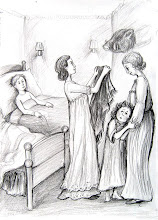Daiches, David. "Virginia Woolf." The Novel and the Modern World. Chicago: University of Chicago Press, 1970. 187-217. Print.
Within David Daiches article entitled “Virginia Woolf,” he discusses the style of Woolf’s writing and how it has influenced novels, specifically during the modern era. Daiches’ point of view is very supportive of Woolf’s writing style and the type of techniques that she used in order to stray from what was conventional in order to experiment, and have freedom within her style. The focus of this article is set upon Woolf’s subjectivity in the sense that she viewed “the mutations of one person’s consciousness into the differing recollections of that person” as significant; she even considered this thought more significant than the “change from life to death.” Daiches’ basic argument is that Woolf was an advocate for recording the consciousness of characters as opposed to making the “material environment” her sole focus (188). Woolf’s practice when writing was to record and represent the consciousness and subjectivity of characters, rather than focusing on actions within an external environment.
This article would be able to contribute greatly in answering the given research question due to the fact its main focus is describing Woolf’s style and her techniques in writing. Daiches states that Woolf’s “novels are most carefully organized to present real patterns of meaning,” which can be traced back to the character of Lily Briscoe and her art. When painting, Lily is attempting to present “real patterns of meaning” in order to establish some sort of “symbolic significance.” Daiches provides information concerning Woolf’s writing style and what she tries to get across, which can be attributed to Lily’s artistic process and what she also attempts to get across. This source speaks about Woolf’s wanting to be an artist, but to stray from being conventional; she strove to have artistic freedom. This is exactly what Lily Briscoe does when painting; she is not trying to be conventional, she is creating art and trying to represent something that applies to consciousness, not the “material environment” (188). By understanding that Lily Briscoe’s artistic process is her way of expressing what she believes to be important (even if the product is not a realistic representation), Daiches article will contribute in showing how Woolf’s narrative correlates with Lily’s process.
Subscribe to:
Post Comments (Atom)



No comments:
Post a Comment